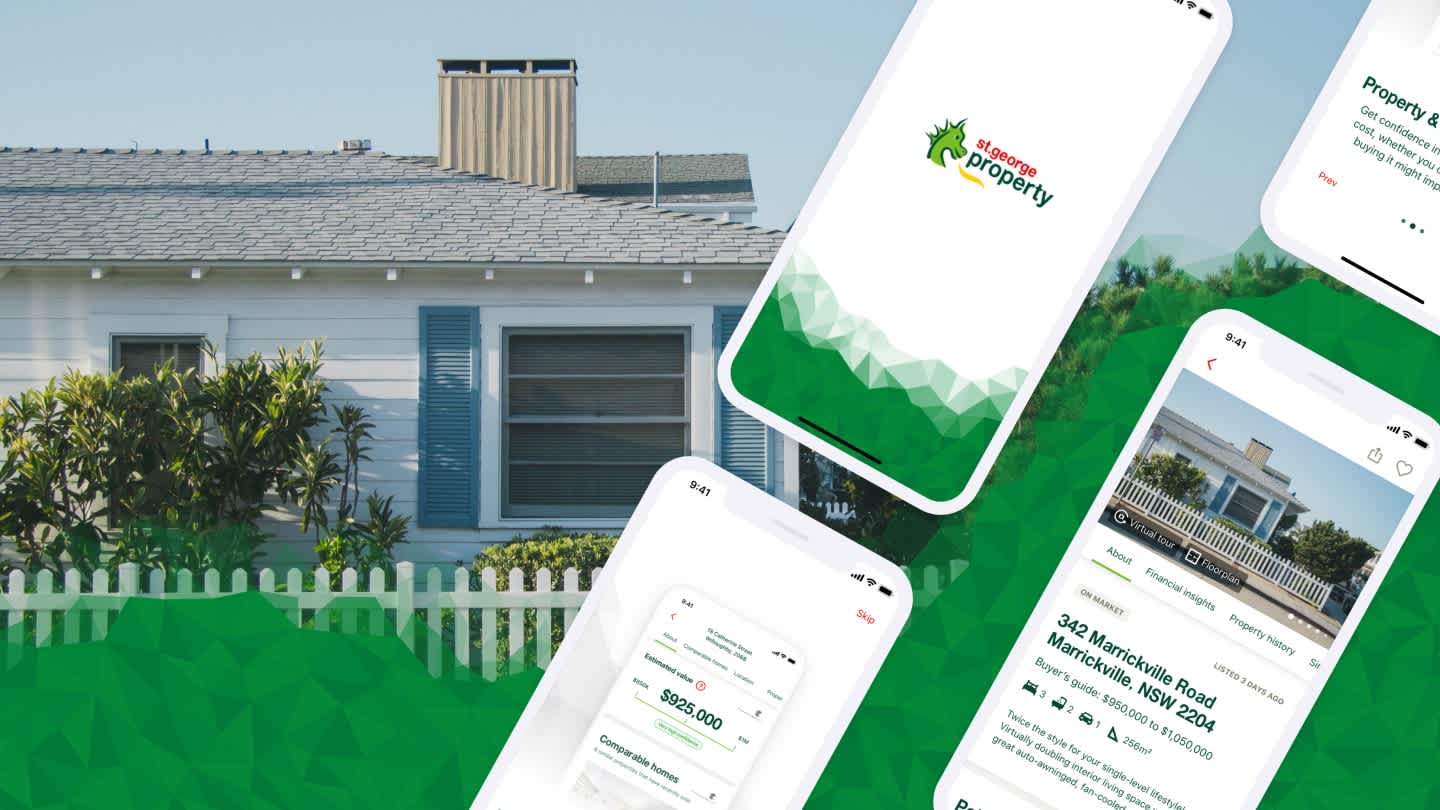/Client Story
Spark 5G Labs
Showcasing high-value asset tracking in a physical space.
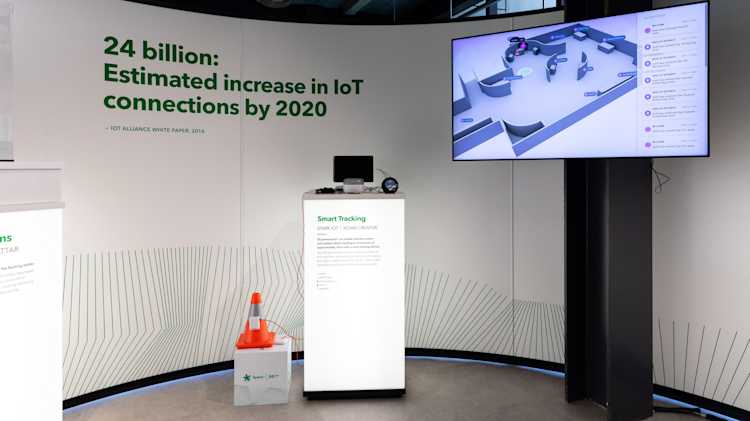
Tapping into the potential of 5G with a real-time tracking system.
- 01Created an indoor position-tracking solution using IoT
- 02Crafted two narratives to showcase real-world applications
- 03Included an Amazon Alexa integrated search function
- 04Developed custom firmware to provide accurate tracking
- 05Set up a fast and cost-effective backend solution
Client
Spark 5G LabIndustry
The Challenge
Leading New Zealand telecom company Spark is working on the roll-out of the 5G mobile network, which will mark a major technological milestone and massively benefit businesses. They approached us to help them develop an IoT proof of concept as one of the first projects to be introduced in their 5G test lab. With 64 billion IoT devices estimated to be in use by 2025 (according to a report by Business Insider Intelligence) Spark wanted to demonstrate that IoT is no longer simply a topic of speculation in tech blogs, but a viable form of technology, ready to be deployed in real-world business scenarios.
The Solution
We set out to create a practical 5G experience to highlight the speed of IoT technology. The project would need to exist within the pre-built 5G testing lab space which meant adhering to physical limitations. We honed the initial concepts with Spark and built an experience around two simple narratives, related to tracking high-value assets and improving safety standards of a hospital environment.
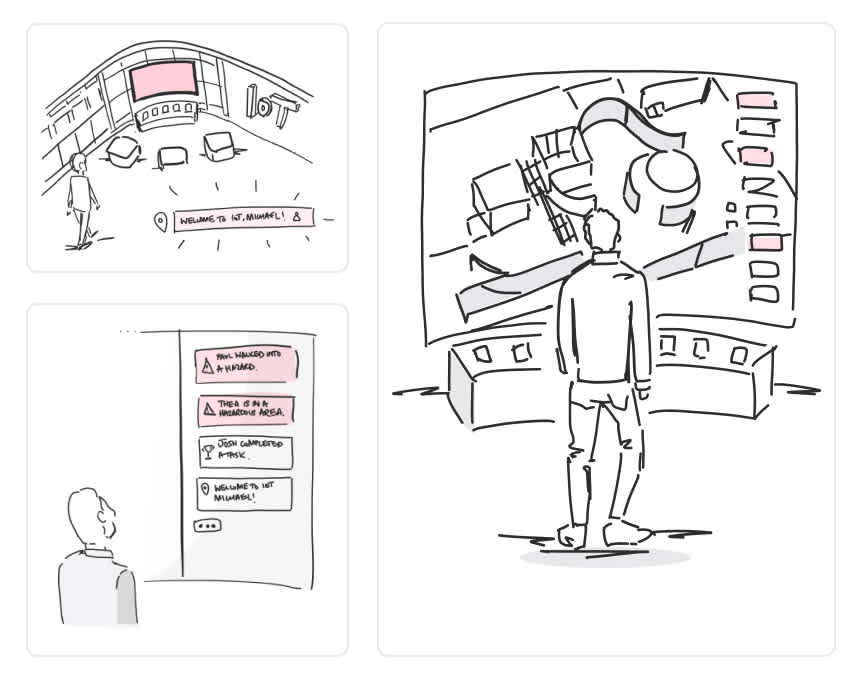
Our design team landed on an interactive floor plan concept, where visitors would be given a lanyard with an IoT enabled device that would track their position in real time. As visitors walked through the space, the lanyards automatically detected areas of special interest nearby and fired off proximity events, which were presented in a timeline feed.
All of this activity was presented in a 3D digital floor plan that could be manipulated and used to search for people or objects using a typical search function or through an Amazon Alexa skill we built to compliment the AWS cloud services we used to engineer some of the IoT solution. Users could also view the historical paths of objects — a feature that could potentially help optimise interior layouts.
We built a fast, cost-effective and scalable backend solution using AWS serverless technology and AWS IoT services. The position tracking data was calculated using Lambda functions and pushed through using MQTT. Position history data was saved periodically to Elastic search, with proximity event states saved to DynamoDB, which Alexa could query simultaneously.
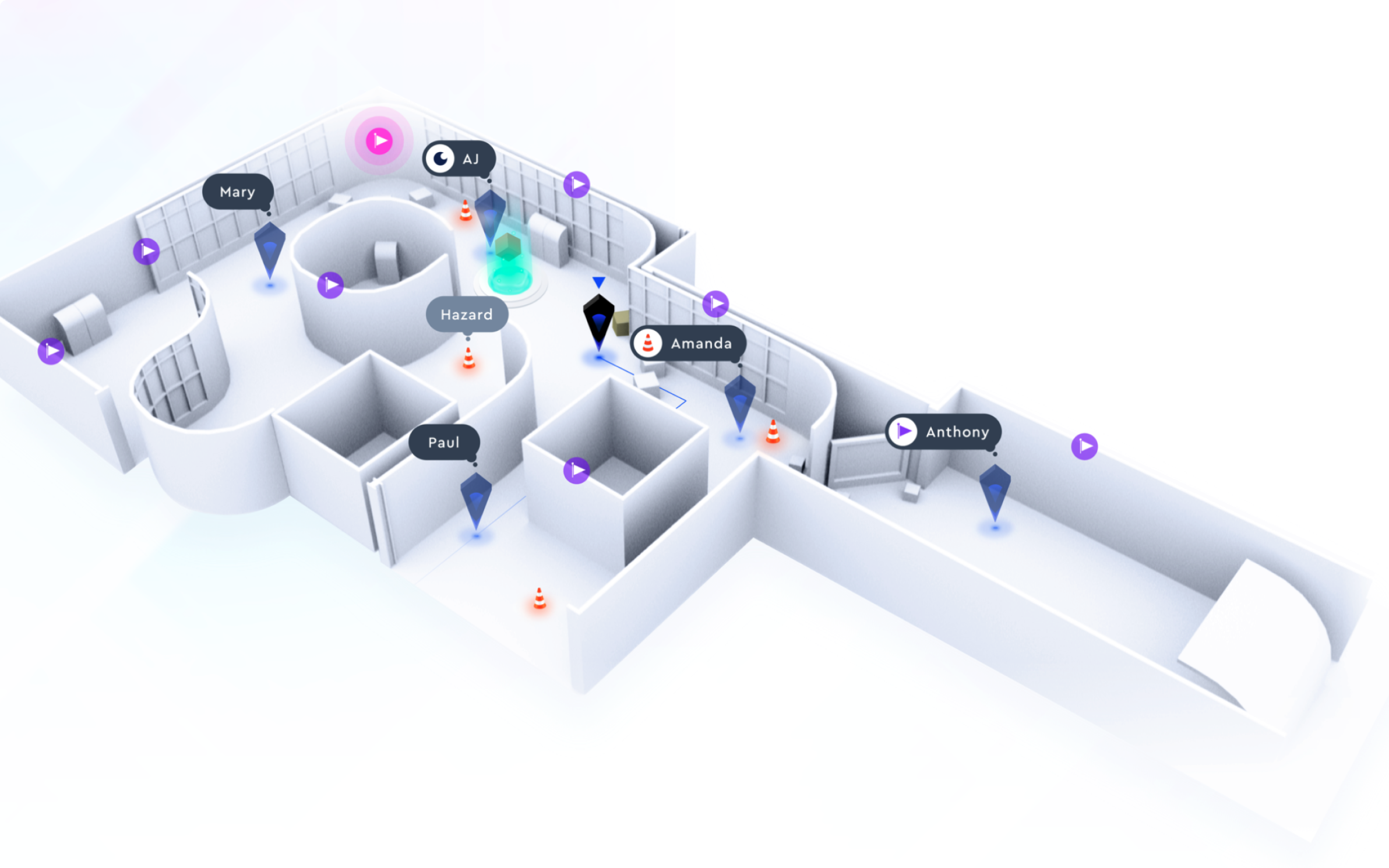
Our frontend team developed the virtual floor plan using three.js with 3D models and animations created in-house. This allowed us to easily deploy to different devices, and quickly push out updates directly over our server without dealing with mobile app update processes.
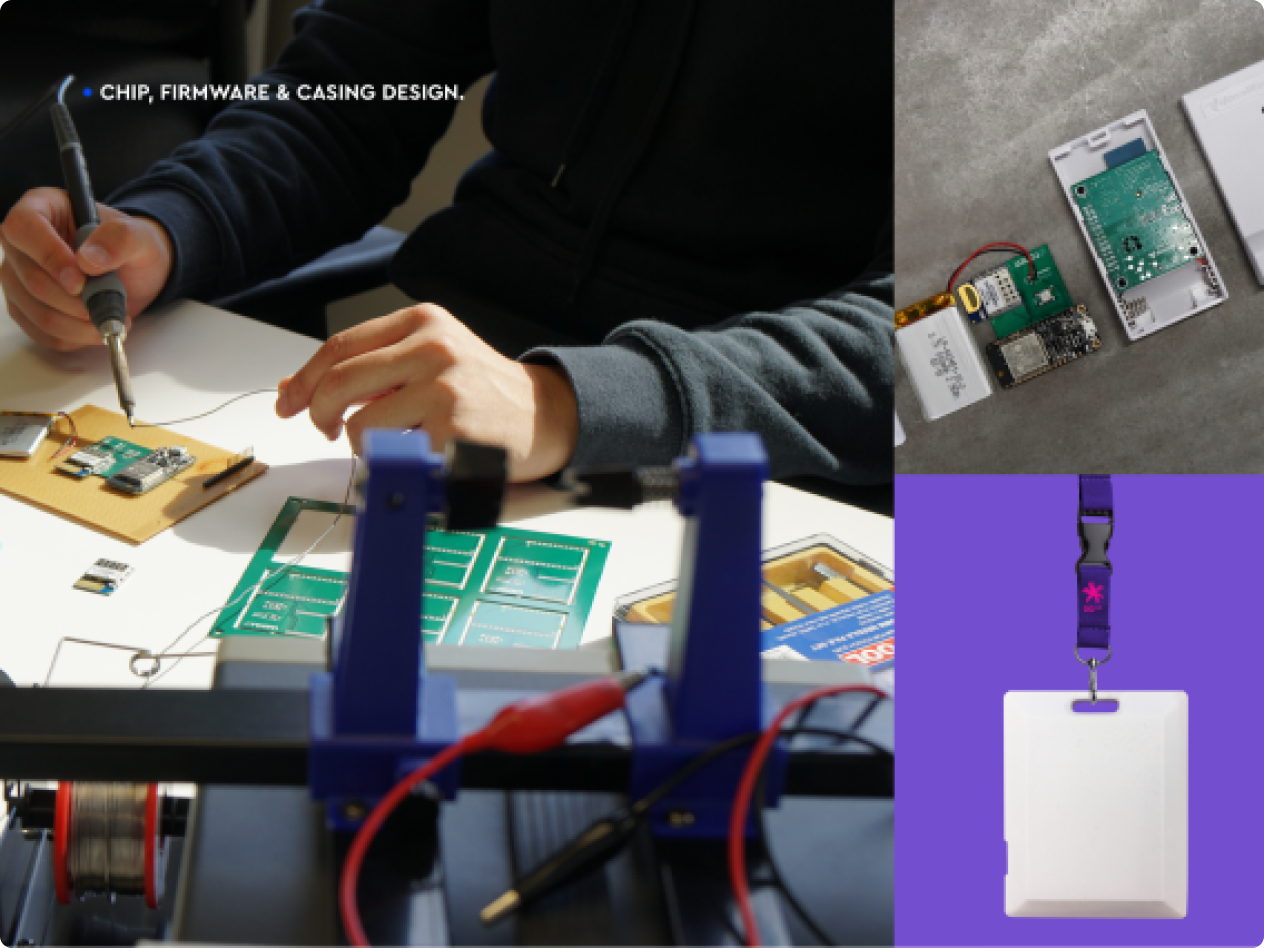
We chose Decawave sensors as the backbones of our position tracking, but the base Decaware units only operated via Bluetooth, which isn’t the ideal choice for real-time accurate tracking. So we added a feather board with our custom firmware to the tag unit so we could connect and send position data via WiFi. We also created a custom-designed circuit board and 3D printed case to house these components.
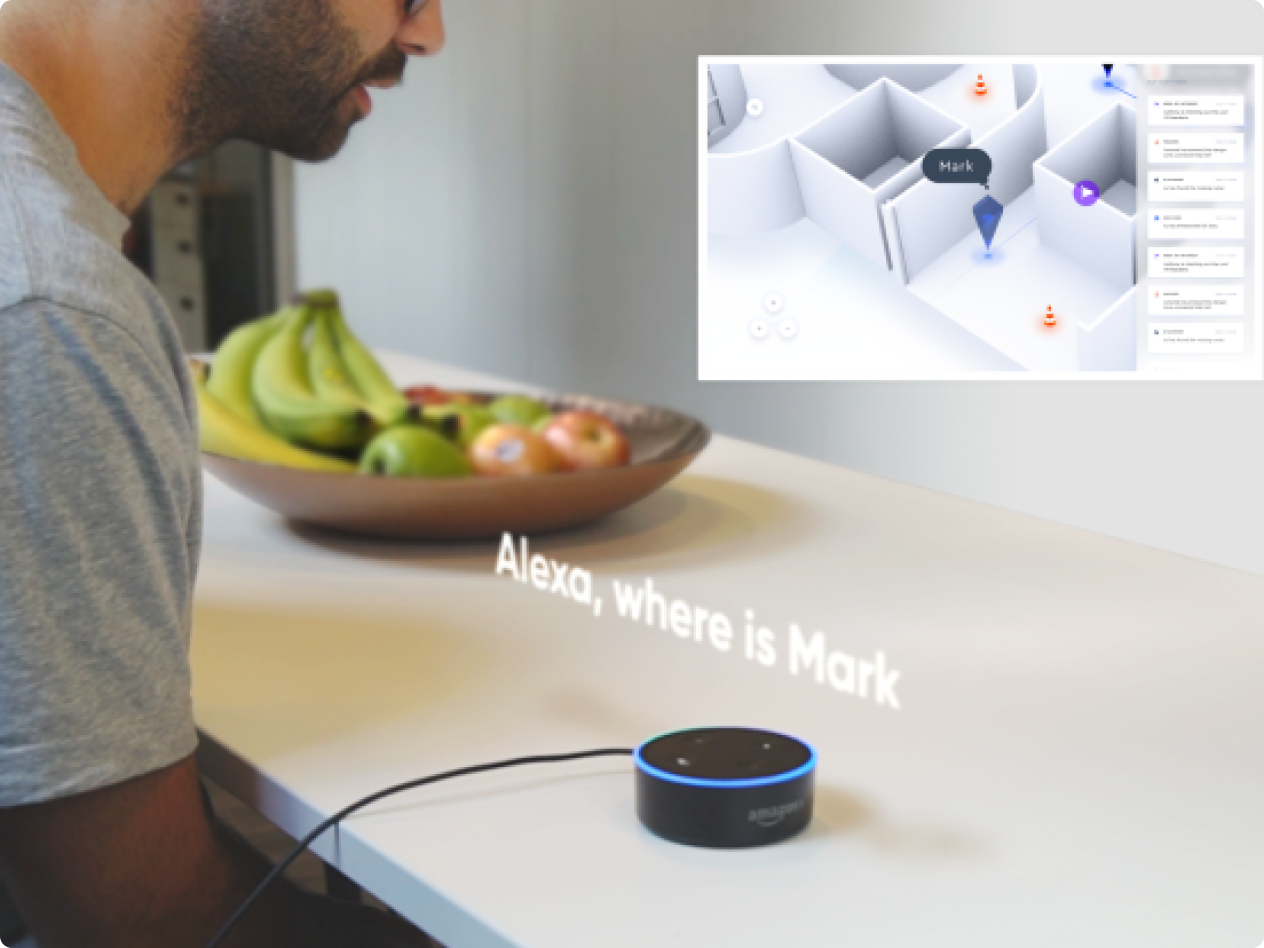
The Results
Visitors to the 5G lab could pick up an iPad and use it to guide them through the space by following their sensor. The two narrative scenarios allowed visitors to instantly grasp the practical applications of this tracking technology. We also provided an Alexa integrated search function, meaning visitors could simply ask Alexa where a certain person was and be directed to their location. The innovative experience successfully demonstrated the practical use of 5G in a business and logistics context, helping to pave the way for Spark’s rollout of 5G in New Zealand.

/Next Client Story
St.George Property
Helping prospective buyers own their dream property.
